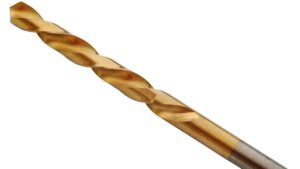Marmota’s bonanza gold grades just got a whole heap richer

There's even more gold at Marmota's Aurora Tank discovery. Pic: Getty
Marmota’s (ASX:MEU) Aurora Tank discovery in the Gawler Craton is already known for its close to surface, yet very-high grade gold topping out at 1m grading 165 grams per tonne which was identified by testing near surface calcrete for anomalous gold.
So it’s certainly a big positive when another round of analysis using the (BLEG) Bulk Leach Extractable Gold method at the same interval actually returned an even higher assay – the highest in fact, ever recorded at Aurora Tank – of 235g/t over 1m from one of the four 1kg samples collected.
Higher assays were also recorded in the rest of the samples from Hole 20ATRC324, which returned an average result of 197g/t, while testing Hole 20ATRC224 returned an average grade of 42.5g/t that just about betters the original fire assay of 41g/t gold.
Greater accuracy, greater certainty
The company has decided on the high accuracy BLEG testing to both confirm the high-grade results from previous fire assaying and to provide confidence for resource estimation.
In regular fire assaying, a 1m split sample is crushed and a small sub-sample of about 40g is collected for testing.
This small sample size runs the risk of the “nugget effect” where larger nuggets – or their absence – can skew results in either direction, making it hard to obtain a statistically representative sample.
BLEG analysis seeks to reduce the nugget effect by using much larger samples to produce what is generally considered the most accurate results of any metallurgical testing process.
“Companies that are lucky enough to get bonanza grades are sometimes reluctant to re-test them, because, due to the nugget effect, new fresh samples can sometimes differ markedly from the original,” chairman Dr Colin Rose noted.
He added that the ensuing results verified (and exceeded) the bonanza grades at Aurora Tank and was particularly exciting and relevant ahead of imminent reverse circulation drilling at Aurora Tank.
Untested exploration potential
This successful validation of results from the drilling of calcrete anomalies is exciting as the company had uncovered more than 40 such untested anomalies following a review of historical data late last year.
Most of these gold-in-calcrete anomalies are located on the tenements that make up the recently acquired Jumbuck gold project.
Successful exploration of these anomalies will validate Marmota’s move to lock up acreage near the third-party Challenger gold mine that produced more than 1.2 million ounces of gold.
Related Topics

UNLOCK INSIGHTS
Discover the untold stories of emerging ASX stocks.
Daily news and expert analysis, it's free to subscribe.
By proceeding, you confirm you understand that we handle personal information in accordance with our Privacy Policy.








